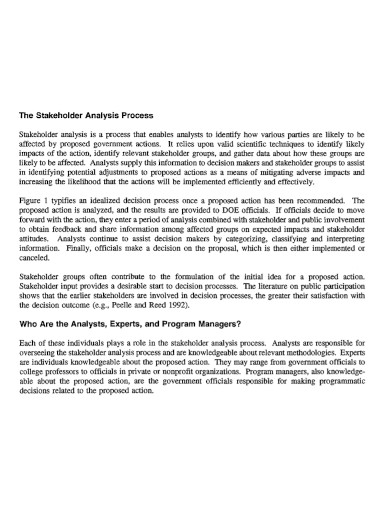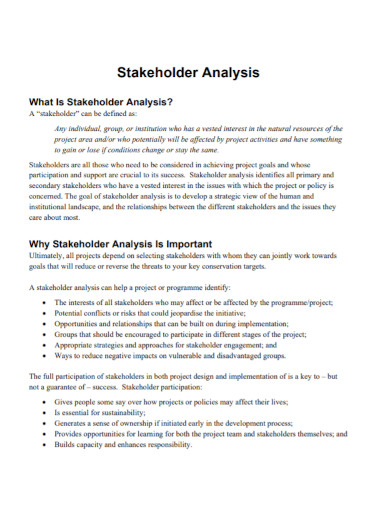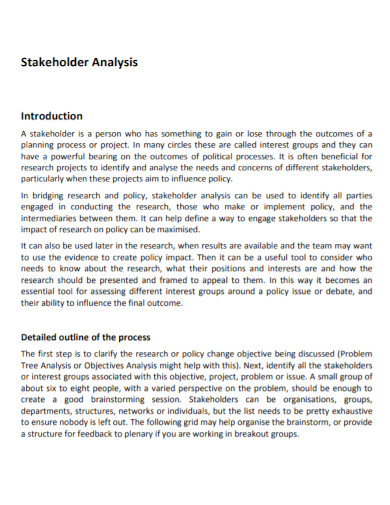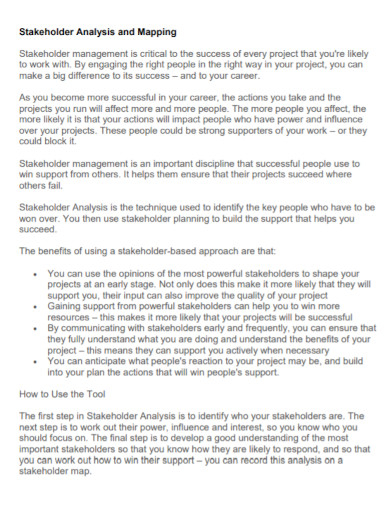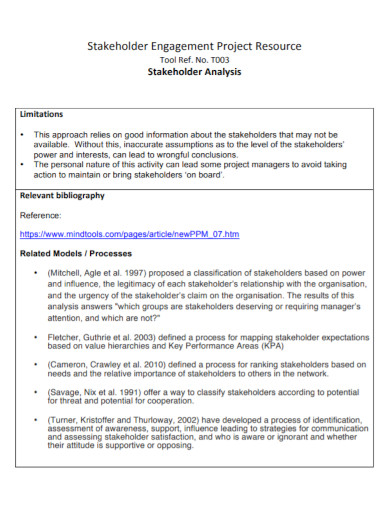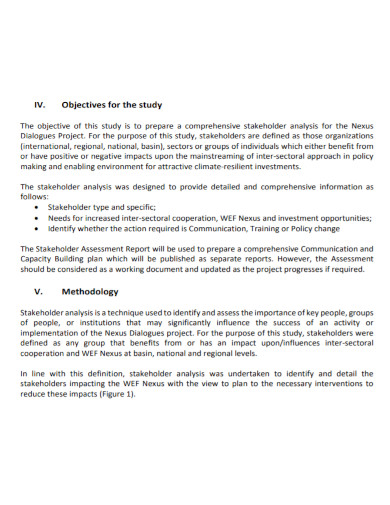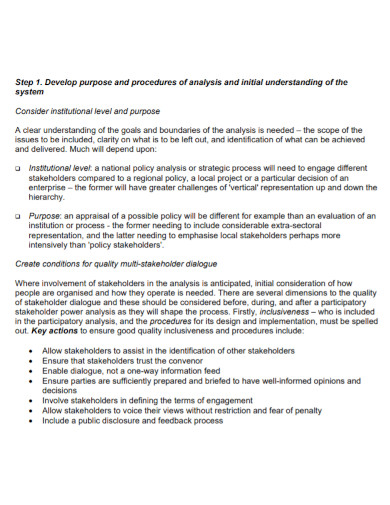10+ Stakeholder Analysis Examples to Download
Some people would use different tactics or strategy in order to win support from others. This can be applied in making projects that should end up being a success. For instance, a stakeholder is the one who can get an interest in a certain company usually called as investors, customers, employees and even suppliers. They define the future of a company. In this article, you will be able to explore about it and how to perform a stakeholder analysis.
10+ Stakeholder Analysis Examples
1. Stakeholder Analysis Template
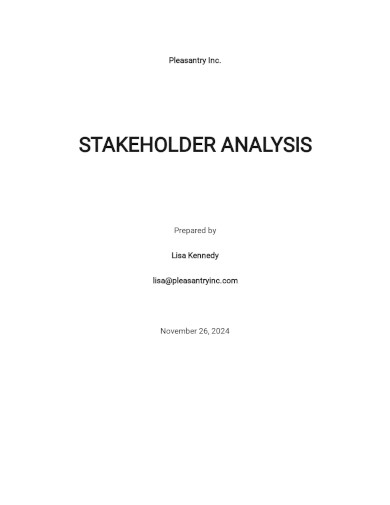
2. Stakeholder Analysis Matrix Template
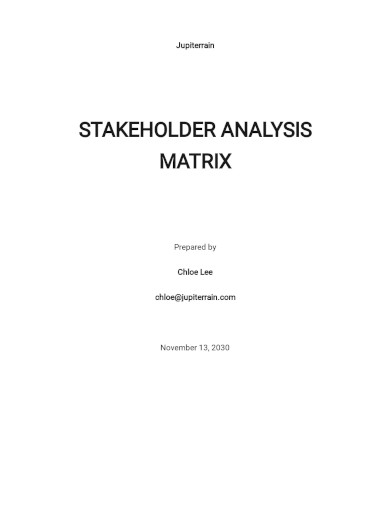
3. University Stakeholder Analysis Template
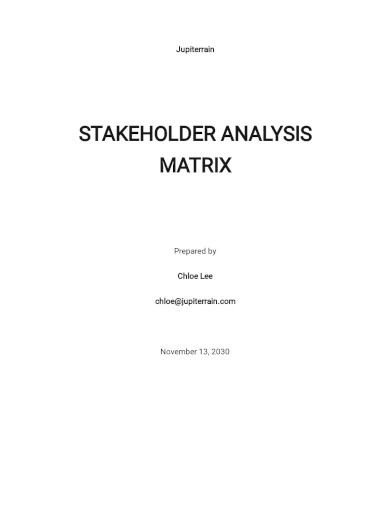
4. Laboratory Stakeholder Analysis
5. Standard Stakeholder Analysis
6. Project Stakeholder Analysis
7. Stakeholder Analysis in Project Planning
8. Stakeholder Analysis & Mapping
9. Stakeholder Project Resource Analysis
10. Nexus Stakeholder Analysis Report
11. Stakeholder Power Analysis
What is a Stakeholder Analysis?
A stakeholder analysis is the process of identifying the important people needed before a specific project begins. It also contains techniques in identifying the expectations and interests related to the project environment. Each of these components will be grouped according to their participation impact and influence of the project.
Types of Stakeholder
Stakeholders are individuals whose interests in a certain project may affect the outcome positively or negatively. There are types of stakeholders.
- Stakeholders with low interest and low influence – this means that a person has low interest in the product and at the same time low influence on the team, the product or the service. They might the chance to get more interest and influence which makes them important soon.
- Stakeholder with low interest and high influence – this means that a person has low interest in the product but has a high influence on his or her team, the product and the service. When this type of stakeholders are satisfied with the results, you will neither see nor hear anything from them. What they only care are the effects of the products and services.
- Stakeholder with high interest and low influence – this means that a person has high interest especially in the operations of the product but low influence when it comes to changes. These type of stakeholders need formal procedures and meetings since they are highly interested to new developments.
- Stakeholder with high interest and high influence – this is considered to be the most important group. They care about the success of the product and definitely has a high influence in determining the level of success. This type of stakeholders can be speakers where they can share their knowledge and experiences.
Purpose of Stakeholder Analysis
The purpose of a stakeholder analysis is to:
- be able to ask for guidance in order to have a successful result of the project.
By doing this, you will be able to start earning their support for your upcoming project. But before knowing who your target influencers are, make sure that you have already conducted a stakeholder analysis.
- be able to bring people together to achieve a goal
You can set meetings with people to communicate with them about the plans and objectives of your project. With this, you will be more focused on achieving the desired outcome and you will have a clearer understanding of what success looks like.
- be able to address a certain problem early
Through a stakeholder analysis, you will be able to detect an issue earlier such as possible objections and changes suggested by the executives. This can help you find better solutions and replacement of your previous ideas that can contribute to the success of your project.
How to Perform a Stakeholder Analysis?
- You should identify your stakeholders by listing the names of the people who are affected and invested more on your work.
- Assess your stakeholders’ level of interest and influence.
- Understand how your stakeholders feel about your project.
FAQs
Who are the most common stakeholders?
The most common stakeholders can be your direct manager or supervisor, investors, government, executives and co-workers.
Is a stakeholder analysis related to strategic planning?
Yes. A stakeholder analysis is the first step in strategic planning which allows us to consider the needs in every aspect of the business.
Who are considered as players and context-setters?
Players are the ones considered as high interest people whom you want to collaborate with. Context setters are the ones that has a lot of influence but don’t want to be involved.
It is important to know who your potential stakeholders are. They serve as the vital component for the success of your project. Perform a good stakeholder analysis by knowing your stakeholders better and their ability to contribute to your work.


![10+ Stakeholder Analysis Examples [ University, Laboratory, ProjectS ]](https://images.examples.com/wp-content/uploads/2021/04/10-Stakeholder-Analysis-Examples-University-Laboratory-ProjectS-.jpg)
